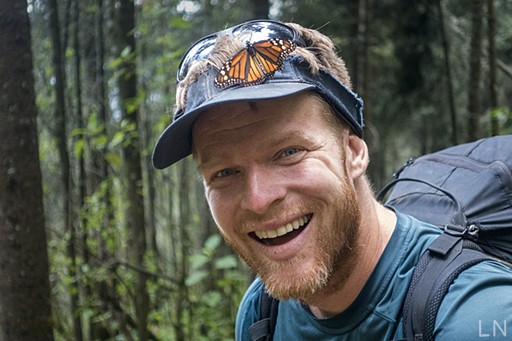
November 21st, 2020 - Lyndsay NicoleMonarch Watch is a volunteer-based, citizen science organization, and an affiliate of the Kansas Biological Survey. Their main focus is on the annual North American migration of the Monarch butterfly. The organization creates and distributes tags to place on monarch butterflies in order to track their migration path from Canada and the United States to Mexico. The first monarch citizen science program was launched in the 1950s and, since then, thousands of volunteers have made fundamental contributions to our accumulating knowledge of monarch biology.
The Monarch Watch initiative's tagging program aims to associate the point of capture of each butterfly with the point of recovery. The data obtained is used to determine the migratory routes of the monarchs, the influence of the weather on their journey, and survival rates, among other factors.
The program involves more than 2,000 schools, nature centers, and other organizations in the U.S. and Canada, as well as an estimated more than 100,000 students and adults who participate in tagging activities each fall. Scientists know a lot about the migration of Monarch butterflies, because they have received information about more than 2,000,000 monarchs over the years.
By working together across North America, they continue to support the Monarch Butterfly populations by providing resources, data, scientific research and information about all things Monarch. If you ask them, they would tell you it is citizen scientists who are responsible for saving the Monarch butterfly, a species at risk in all three North American countries; Mexico, the United States, and Canada.
No effort is too small to have a positive impact. For more information on how to get involved, please visit the official Monarch Watch website.
References:
Wikipedia
University of Kansas Biological Survey
Central Lake Ontario Conservation
Monarch Conservation Toolbox
Oxford Academic
November 21st, 2020 - Lyndsay Nicole - Fly Monarca Expedition
The Monarch Watch initiative's tagging program aims to associate the point of capture of each butterfly with the point of recovery. The data obtained is used to determine the migratory routes of the monarchs, the influence of the weather on their journey, and survival rates, among other factors.
The program involves more than 2,000 schools, nature centers, and other organizations in the U.S. and Canada, as well as an estimated more than 100,000 students and adults who participate in tagging activities each fall. Scientists know a lot about the migration of Monarch butterflies, because they have received information about more than 2,000,000 monarchs over the years.
By working together across North America, they continue to support the Monarch Butterfly populations by providing resources, data, scientific research and information about all things Monarch. If you ask them, they would tell you it is citizen scientists who are responsible for saving the Monarch butterfly, a species at risk in all three North American countries; Mexico, the United States, and Canada.
No effort is too small to have a positive impact. For more information on how to get involved, please visit the official Monarch Watch website.
References:
Wikipedia
University of Kansas Biological Survey
Central Lake Ontario Conservation
Monarch Conservation Toolbox
Oxford Academic
November 21st, 2020 - Lyndsay Nicole - Fly Monarca Expedition


 Lyndsay Nicole is a contributor to this page and the forthcoming Fly Monarca documentary film.
Lyndsay Nicole is a contributor to this page and the forthcoming Fly Monarca documentary film.


















